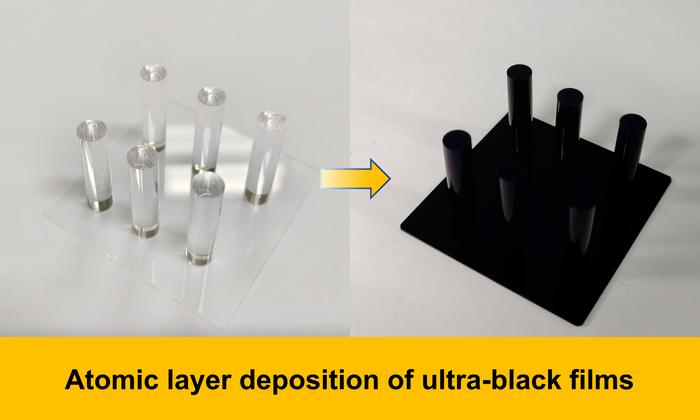Even some fields that seem fully settled will occasionally have breakthrough ideas that have reverberated impacts on the rest of the fields of science and technology. Mechanics is one of those relatively settled fields – it is primarily understood at the macroscopic level, and relatively few new breakthroughs have occurred in it recently. Until a few years ago, when a group of Harvard engineers developed what they called a totimorphic structure, and a recent paper by researchers at ESA’s Advanced Concepts Team dives into detail about how they can be utilized to create megastructures, such as telescope mirrors and human habitats in space.
Continue reading “A New Reconfigurable Structure Could Be Used to Make Space Habitats”Ultrablack Coating Could Be Ideal for Telescopes

If you, like me, have dabbled with telescope making you will know what a fickle friend light can be. On one hand you want to capture as much as you can (but only from the object, not from nearby lights) and want to reflect or refract it to the point of observation or study. What you most certainly don’t want is stray light to be bounced around inside the telescope so components (except the mirror!) are sprayed as black as possible. Unfortunately black paints tend to be quite susceptible to damage and struggle to cope with the harsh conditions and cold temperatures telescopes are subjected to. A team has recently developed a new atomic-layer deposition method which absorbs 99.3% of light and is durable too.
Continue reading “Ultrablack Coating Could Be Ideal for Telescopes”Chitin Could be the Perfect Building Material on Mars
It’s hard to deny that we’re heading for a future with a human presence on Mars. But to develop sustained presence, there are an enormous number of technical problems to be worked out. One of those problems concerns manufacturing and building.
We can’t send everything people will need to Mars. We’ll need some way to build structures, and tools and other things.
Continue reading “Chitin Could be the Perfect Building Material on Mars”

